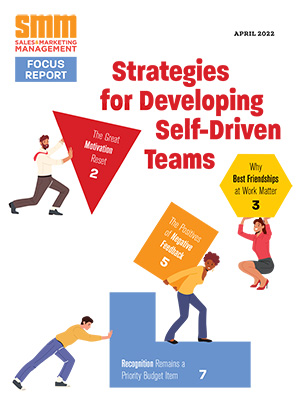Editor’s Note: TimSanders, author of “Dealstorming,” interviewed Matt Dixon, a group leader at CEB and co-author of “The Challenger Sale” and “The Challenger Customer.” This is part one of a two-part interview.
Tim: Talk to us about how “The Challenger Customer” picks up where “The Challenger Sale” left the reader.
Matt: “The Challenger Sale” was really all about what we found to be a big selling problem: How do we engage with these customers who are increasingly empowered with information?
As our own data shows, 57 percent of the buying journey is over before the customer even talks to the salesperson. What do you do in that world? How do you cut through the noise? How do you break through to those customers who kind of think they’ve figured it all out, and the only thing they really want to talk to you about is how much you’re going to cave on your price and flex in your terms and conditions. That’s a tough place for a salesperson to be.
Many readers came back to us saying, “Wow, this is a cool way and a different way to think about what it means for a salesperson to deliver value in this information empowered age, but let’s be honest, even if I do what you say in the book and I go out and I challenge my customers with a provocative insight, that’s just the tip of the iceberg. There’s a long, long, long way to go before I actually walk out of that customer’s office with a signed deal.”
Co-author Brent Adamson says that one of the curses of being in the research business is that every time we find exciting new answers it surfaces 10 times as many problems and questions with the research. I think the big problem for us was what happens next [in the sales process].
In “The Challenger Customer,” we used that pretty simple graphic in many different places in the book, which is a typical purchase journey that moves through three phases. In Phase 1, it’s the customer and their status quo. Phase 2, you get a single stakeholder excited about a new way forward. Phase 3, there’s a signed deal. The reality is “The Challenger Sale” dealt with the move from the status quo to getting a single person excited about what you’re talking about. The new book deals with what is actually not a selling problem, but a buying problem, moving from the second phase to the third phase. How do we go from having one person excited about what we’re talking about to getting the whole rest of the organization on board and walking out of the door with a new customer or an expanded contract?
The big aha finding from our new book is that the problem of building customer consensus is as old as solution selling. It’s nothing new. What is new is that today it’s not just the number of people involved in the sale. It’s the diversity of those people involved in the sale. This diversity breeds dysfunction and what ends up happening is that that buying group settles on sort of lowest common denominator thinking like “let’s stick with the status quo. Let’s save money. Let’s reduce risk. Let’s avoid disruption.”
Here is a very simple example: Back in the day, an HP salesperson selling computers to a company. At the time, the head of IT infrastructure bought computers. Now HP reps are trying to sell not only the computer, but all the support that goes with it and the entire end-user computing service. They want to manage that for the company. To do that, now you’re talking about not just a hardware purchase. You’re talking about HR implications because we have people on our side who do that stuff now and you guys want us to outsource it to you. We’ve got legal and data privacy issues here. It touches many other parts of your organization. When we get all those people together around a table they are most likely to decide to do nothing.
Today, sales must bridge that gap from getting somebody excited to getting everyone on board. That is the problem that we deal with in this new book. We take it all the way back to asking the first questions: Who is the person you actually want to hitch your wagon to? What do they care about and then how do we use that person to forge consensus?
Tim: You talk a lot about the rising number of decision makers on the buyer side. Is this a cyclical trend driven by economics or regulations? Will it always go up?
Matt: I don't think this is a function of a moment in time. “The Challenger Sale” project started as this idea of how to sell in a downturn, but we ended up finding that it’s a much bigger story than that. Challenging is about how to sell solutions to information-empowered customers.
I think suppliers also drive this trend. It’s a function of our move from selling products to selling solutions. As I said before, products can be purchased by a person running a department with minimal input from other folks using his or her budget. An expansive solution introduces a lot of risk and it brings more people to the table, so selling that end-user computing service entails a number of stakeholders a variety of perspectives that selling a box of laptops just didn’t.
There’s also a change in how leaders work. Our research marks a shift away from hierarchical decision making to network-based decision making. The number of senior leaders who will decree, “we’re going to go do X and everyone is supposed to get in line,” still happens from time to time, but much more likely, a senior decision maker says, “I think we want to do X, but what I need to do is get these five to 15 on board.” Because they know that they’re very unlikely to drive any kind of change simply by decree from the top down. We’ve been tracking this in our HR practice, actually.
Read Part 2 of the Q&A with Matt Dixon here.
Tim Sanders is the former Yahoo! chief solutions officer and author of four books, including his most recent DEALSTORMING: The Secret Weapon That Can Solve Your Toughest Sales Challenges.
Matt Dixon, coauthor of THE CHALLENGER CUSTOMER: Selling to the Hidden Influencer Who Can Multiply Your Results and THE CHALLENGER SALE, is the group leader of financial services and customer contact practices at CEB.


